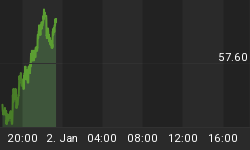Recent history has shown growing public concern about the federal debt, which has been expanding at an increasing rate. Some say that the federal debt is issuing future generations of Americans into bondage; that their economic freedom will be restricted. Still others go so far as to predict that in the future everyone will be working for the government to pay off the national debt.
While the national debt may be higher than is warranted, these predictions are not. In fact, expanding the federal debt will likely do exactly the opposite - no one will be working for the government, because government workers do not add to the government's bottom line.
Instead, it is more likely that people will be pushed out of government service and be forced into the private sector where they will innovate, invent, or otherwise produce. From another perspective, these people will have to contribute to government tax receipts in order that the government can pay down debt.
If this seems counterintuitive, it is due mostly to the law of unintended consequences; just like a president who adopts policies meant to encourage economic equality, only to see his country's wealth gap widen to the largest degrees ever. Another example would be that same president implementing social policies meant to improve living standards, but to have his country's ranking in those areas stagnate and begin to decline in even more important metrics like social mobility or economic liberty.
For a lot of people, a national debt of $17 trillion is simply an unfathomable number. Thinking of numbers like their own mortgage or credit card bills, they forget that $17 trillion is the face value of US debt - debt that is in bonds, whose values fluctuate.
Consider, for a moment, if the entire US national debt was issued in 10-year treasury bonds (and much of it is), the longest running continuously-issued government bond. Over its history, the average historical interest rate on 10-year treasury bonds is just over 6.5%, more than double today's rate of about 2.85%.
In other words, if interest rates on 10-year treasuries today went just to their historical average, the market value of US national debt would not $17 trillion; it would be less than half of that - under $8 trillion.
Were that the case, would people still be so concerned about the national debt?
The tendency of people - and we are all guilty of this at different times - is to look at history and extrapolate it into the future. Present concerns over the national debt are a great example. The truth, however, is that trends change. Interest rates rise and fall, just as national debts expand and contract.
Another great example today in the United States is the average age of corporate assets (production facilities, manufacturing plants, etc.). For years American companies were outsourcing jobs and letting facilities in this country age rather than expand or modernize.
A result of this long-term trend is that now most people assume that those companies will continue to do the same things. Their assumption, however, would be wrong. In fact, we are already seeing cases of companies building new facilities in the US, expanding existing facilities, modernizing others.
From a macro-economic perspective, the United States today is just about where China was 15-20 years ago. After years of high unemployment and recent oil and natural gas discoveries, the US has abundant supplies of cheap labor and cheap energy coming on line. This country could not be better poised for economic growth - unless we had more business-friendly policies coming from Washington.
This does not mean, though, that investors should not beware: Just because the US economy does well does not mean that financial markets will also see success. The market can perform dismally even as the economy expands, and with stocks at all-time highs, now is the time for investors to be reevaluating their exposure to a potential correction in the markets, as well as their abilities to benefit from coming economic developments.















